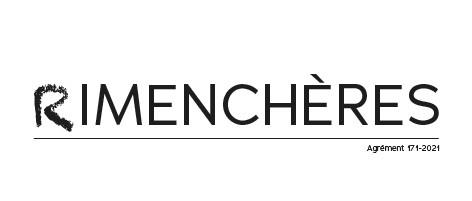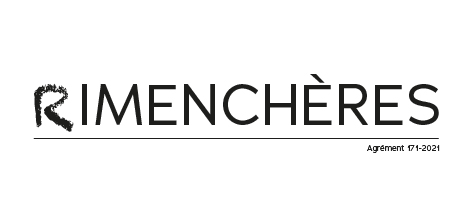Lot n° 103
Estimation :
2000 - 3000
EUR
Result with fees
Result
: 2 873EUR
Grand plat de reliure d’un manuscrit de format carré
Iran, Qajar art, signed and dated: Aqa Sayyid Muḥammad Naqqash al-Iṣfahani al-Imami, Tehran, 18 May 1872 (10 rabiʿ al-ʾula 1299)
Of square form, made of papier-mâché and lacquer, painted in polychrome, trimmed with a floral bouquet bordered by a frieze of cartouches and small medallions at the spandrels, inscribed in Persian. The delicate painted floral decoration, which is framed by twenty-four cartouches of inscriptions in nastaʿlīq, among which are the name of the artist, Sayyid Muḥammad al-Iṣfahānī al-Imāmī (active between the years 1840 and 1880), the place and date of the work's production (Tehran, 1872), is of high quality of execution and fully meets the taste developed during the reign of Nāṣir al-Dīn Shāh Qājār (r. 1848-1896): standing out against a deep, luminous green background, the traditional buds and flowers of roses, poppies, irises, or hyacinths are accompanied here by gilded medallions, with forms freely inspired by Western rococo. 35x 35 cm Private collection from the 1970's, dispersed in Rennes in Brittany. This large binding plate features a delicate floral decoration, framed by twenty-four cartouches of inscriptions in nastaʿlīq, among which are the name of the artist, Sayyid Muḥammad al-Iṣfahānī al-Imāmī (active between the 1840s and 1880s), the place, and the date of the work's completion (Tehran, 1872). The painted decoration is of high quality of execution and fully responds to the taste developed during the reign of Nāṣir al-Dīn Shāh Qājār (r. 1848-1896): standing out against a deep, luminous green background, the traditional buds and flowers of roses, poppies, irises, or hyacinths are accompanied here by gilded medallions, with forms freely inspired by the Western rococo (Layla S. Diba, Maryam Ekhtiar (ed), Royal Persian Paintings, 1998, pp. 239-241). The originality of the composition is explained, in part, by the square format of this plate, which is extremely rare in the field of book arts in Iran. However, the function of the work is not in doubt, as it is attested by the poem contained in the cartouches, praising the beauty of the binding and the virtuosity of its painter (Inscription transcribed in the PDF catalog). Among the very rare Iranian manuscripts in square format, let us mention a talismanic and cosmological work from the Qajar period preserved in the Library of Congress in Washington, D.C., which contains, among other things, invocations, representations of constellations as well as some kind of magical squares (wafq, murabba', or buduh) (M146, fol. 27 and 40) (see Christiane Gruber, "From prayer to protection: Amulets and Talismans in the Islamic World", in Leoni (ed.), Power and Protection: Islamic Art and the Supernatural, 2016, pp. 33-52). However, in addition to the choice of the square format, the evocation of two astrological signs in the poem on our binding plate (Gemini and Pisces), could suggest that the subject of the missing manuscript was also esoteric in nature. Signed and dated, this plate is clearly an important milestone in the study of Sayyid Muḥammad's work. Associated with the so-called Imāmī school of Iṣfahān, referring to a group of artists active in the nineteenth century who claimed descent from Imam Husayn (a lineage that justifies the use of the title sayyid and the nisbah imāmī and/or husaynī), the painter is known on the basis of a corpus of lacquers in which exceptional works appear. Among his works, a fan dated 1869-70 (h. 1286) is preserved in the Khalili Collection (Khalili, Robinson, Stanley, The Nasser Khalili Collection of Islamic Art. Lacquer of the Islamic Lands, 1997, p 104, cat 312). Several pen boxes, all signed by the artist, have also been identified. A pen box with royal decoration, bouquets of flowers and scenes from the Shāhnāmah, was sold at Bonhams in 2010 (Islamic and Indian Art, London, 15 April 2010, lot 246). Two others, one with similar decoration to the previous one, the other decorated with portraits of Sufi masters and mystical and courtly scenes, are preserved in Washington, D.C., in the Arthur M. Sackler Gallery (S2014.17.65 and S2014.17.67, published in Farhad, McWilliams, Rettig, A Collector's Passion: Ezzat-Malek Soudavar and Persian Lacquer, 2017, pp. 80-81 and p 133). Finally, a mirror case, decorated with birds and flowers, is preserved in the Hermitage Museum (VP-36 Adamova, Adel, Persian Manuscripts, Paintings and Drawings from the 15th to the early 20th Century in the Hermitage Collection, p. 345, cat. 153). In addition, Sayyid Muḥammad is associated with four versions of a portrait of Nāṣir al-Din Shāh, made in the 1840s around his coronation. The first three are paintings on paper, dated 1845, 1847, 1849 (respectively, published in Ernst Grube, Muslim Miniature Paintings, 1962, p. 139, cat. 124; sold at Sotheby's, Fine Oriental Miniatures, Manuscripts and Qajar Paintings, 4th April 1978, 1978, lot 83 and Bonhams, Islamic and Indian Art, 24 April 2012, lot 32. The
My orders
Sale information
Sales conditions
Return to catalogue


